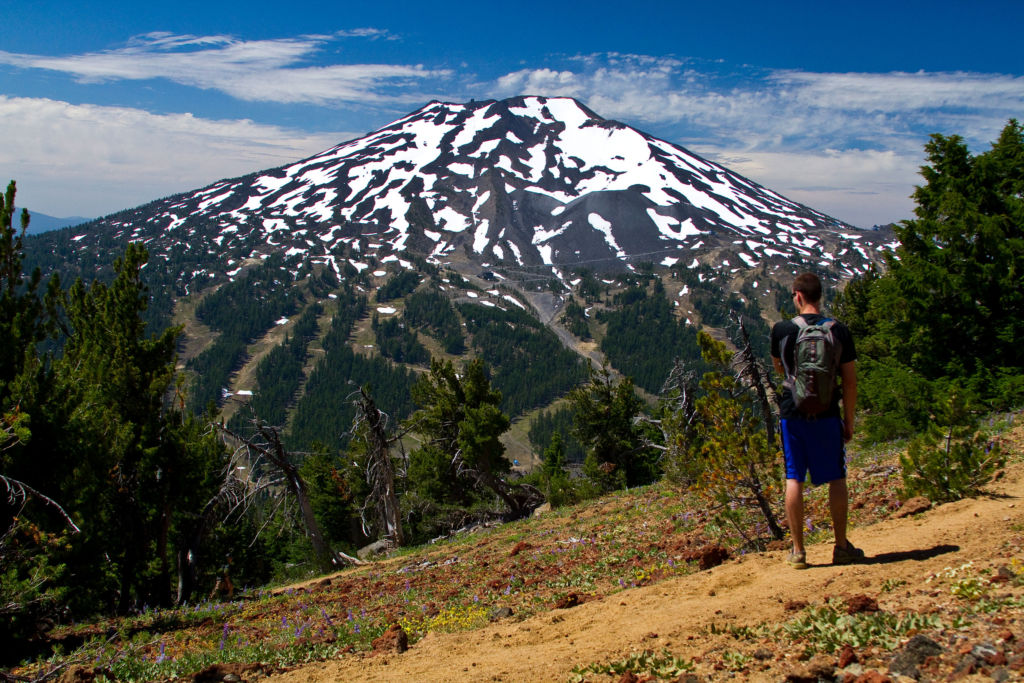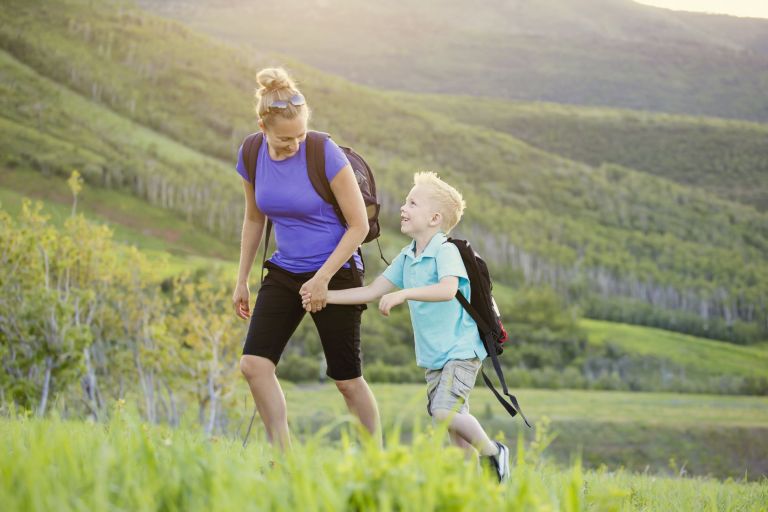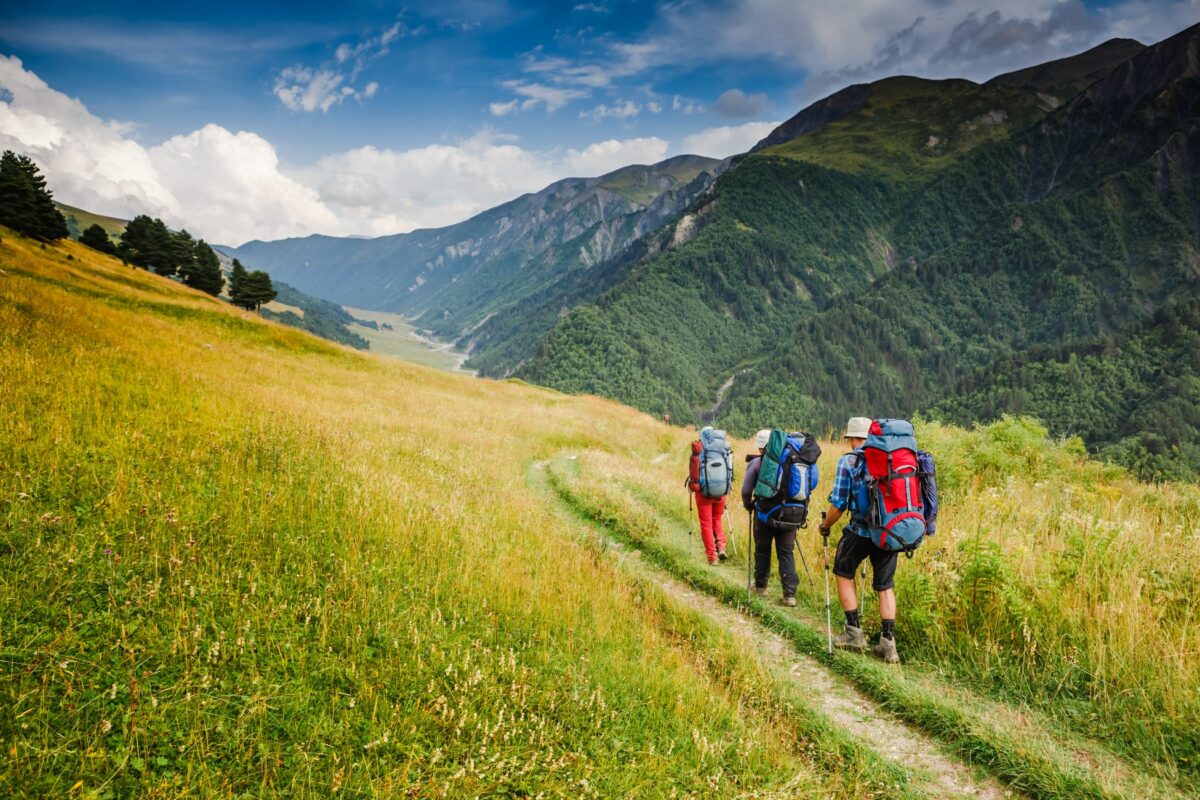My childhood was split between the plains of North Dakota and the swamps of Louisiana. Needless to say, one doesn’t find much in the way of mountains in those two states. However, many summer trips were spent traveling to Colorado, visiting grandparents and extended family while getting in the family camping trips up in the mountains. I suppose somewhere in all those trips I found my love for the mountains.
When it came time for college, I headed to Colorado. It wasn’t long before I was spending weekends camping in the mountains along the Front Range and bagging 14’ers with friends. (14’ers are peaks over 14,000 feet, of which there are 52 – or more depending on your source – in the state of Colorado).
After graduate school, I moved to Oregon and began exploring the mountains of the Pacific Northwest. The allure of backpacking became stronger, and I decided this was the next challenge to conquer.
My first backpacking trip was in Utah’s Arches National Park. With a few good friends in tow, I spent three days and two nights trekking through the park. Several other trips would follow in destinations such as Broken Top in Central Oregon, the Wallowa Mountains of Eastern Oregon, and Jefferson Park outside of Salem, Oregon.

Each trip had its own memories and uniqueness. However, the Wallowas offered me an entirely new experience in the outdoors. We spent five days and four nights in the backcountry, covering more than 35 miles with 7,500 feet of elevation change. There wasn’t another soul in sight for 48 hours, the views were spectacular, and it was a great chance to unplug and unwind.
Hiking for beginners — What do I need?
A successful hike or backpacking trip starts with a willingness to explore the outdoors. The physical conditioning and gear necessary will vary widely depending on the distance, terrain, elevation, and weather one might encounter. Some simple advice is to start small and build from there.
Fitness first
Before heading out the door for your first hike or backpacking trip of your life, or even just of the season, remember to spend some time getting into hiking/backpacking shape.
Hiking/backpacking is a total-body effort. The terrain will require different muscle groups to work harder at certain times. Downhill terrain puts a heavier emphasis on your quadriceps (muscles on the front of your thighs) while climbing uphill is more demanding on your hamstrings and glutes. Ankle motion, strength and stability become more important the more varied the trail conditions and the angle of incline. While your legs will carry you along the trail, having good abdominal and upper body and back strength is important for carrying a loaded backpack over distance. Deficits in any of these areas can lead to compensation patterns and a propensity for injury over time.
When you’re ready to get started, the video below features a series of exercises designed to lay a foundation for strengthening and balance that will help make your hiking season a successful one.
If you’re experiencing any aches or pains, it’s advisable to visit a physical therapist before you begin any exercise program. Additionally, if any of these exercises cause you pain or discomfort, stop and seek advice from your PT or medical doctor before continuing.
Physical therapists are experts in musculoskeletal matters and are best suited to put together the appropriate customized programming to help people reach their goals and move better. Use our clinic locator to find the Therapeutic Associates closest to you!
Gear for the trail
Footwear, clothing, and other gear can be overwhelming when new to hiking. I recommend visiting a local outdoor store where experts can assist you in selecting the right gear for your level of experience and desired progression. Even if you’ve done the workouts and your body is in shape for the hiking season, without the right gear, injuries can still happen.
- Footwear for hiking
Proper socks and hiking shoes or boots are a must. Without them, blisters ensue, which makes for an uncomfortable finish. Not surprisingly, joint injuries are common on the hiking trail, and can be due to improper footwear. Make sure you have the choose your shoes wisely to provide the support you need and spend some time testing your balance before hitting the trail. Sprained ankles and knee injuries can result from a misstep or a fall on uneven terrain. Limping back or having to be carried a few miles to civilization isn’t fun for anyone.
- Pick the right pack, and pack it right
Another common complaint of hikers and backpackers is back pain. It’s important to ensure your pack fits you right and is the proper size for your supplies. Visit a local outdoor store where the experts can guide you, making sure the length of the pack matches your back and that the straps and waist belt sit properly on your body. Don’t overload your pack and be sure to load your gear by placing the heavier items near the base and close to your body. A heavy or ill-fitting pack can cause you to lean and bend forward, a posture that could quickly lead to back pain (and you’ll miss all the wonderful views!) Trekking poles can be helpful in keeping an upright posture and give you some extra points of contact for balance and stability when encountering challenging terrain.
- Hydration and nutrition
Hydration and nutrition are essential to a successful hike or backpacking trip. Intake levels will vary based on the individual, but consistent and regular water intake is important. Monitor your urine for the best indicator of hydration levels. Ideally, urine should be pale yellow to clear. If it appears darker in color, you need to increase your water consumption.
Remember, you will be sweating while on the trail, so your normal water intake won’t cut it. 60–80 ounces per day for adults is the recommended normal water consumption. It is better to carry extra water than not bring enough.
Foods high in protein and carbohydrates will keep you fueled along the trail. More advanced planning will be required for longer-distance hikes or backpacking trips. It’s important to spend time focused on hiking preparation, to ensure you don’t go hungry or thirsty and to be sure your body has the fuel it needs.
Once you feel like you are ready to tackle the trail, peak, or backpacking trip, make sure you do your homework. The internet is a great resource for different trails and hikes. More traditionally, hiking books specific to your region can be great resources too and can add a nice touch to your bookshelf if that’s your style. Good resources will often rate the level of difficulty for the hike or backpacking trip, the expected time it will take to complete and other added nuances for people to consider. Pick something that matches your level of fitness and experience. Then, get your feet wet. (Not literally! That can lead to some blisters, ouch!)
Photo courtesy of Matthew Hilton
Your PT for life.
From injury recovery to movement and performance enhancement, patient success is our passion. Our therapists are committed to the application of evidence-based treatment techniques to ensure you experience the best in rehabilitation and preventative care and see progress with every visit.


